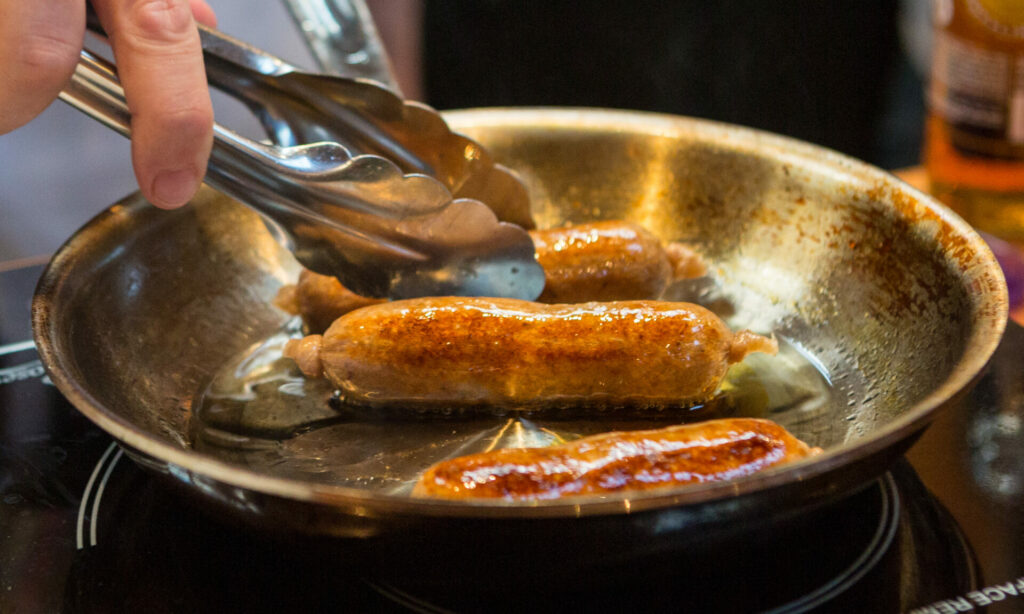The unfolding food and feed crisis caused by the Russian invasion of Ukraine shows, once again, that our livestock production model, based on massive inputs of grains for animal feed, is not only unsustainable but untenable.
Amidst justified calls for increased EU self-sufficiency for crops that are essential to human nutrition, we witnessed the lament of the industrial livestock industry, unable to cope without a massive influx of proteins for intensively reared farm animals.
Among other support measures, the European Commission allowed Member States to use fallow lands, which are supposed to be set aside for the protection of soil and biodiversity, to produce crops, more specifically for animal feed. The EU needs to sustain its billions of pigs, cows and chickens, hence the protection of biodiversity, and by extension the protection of the environment, have become liabilities.
I am not alone in considering this a very dangerous and shortsighted gamble, all the more tragic in the light of the latest IPCC report, which sounds very much like a final call to save the planet. Yet, apparently, we are ready to take wild chances in the name of steak. But what if we could have the steak without the cow?
“An out-of-body experience: eating chicken while the chicken that you are eating is in front of you”. I vividly remember one of the first ever commercials for cultivated meat (i.e., animal cells grown in bioreactors), brilliantly created by Good Meat back in 2018. Little did Ian, the chicken in question, know that, in only four years, so much would change, and so many more companies, created with a vision for a radically different future of animal protein production, would appear.
Milk, eggs, fish, meat: hundreds of brilliant minds scattered across the globe are hard at work to create these products starting from cells, yeasts, or bacteria. The idea is to eventually disassociate animal protein production from industrial animal agriculture, with enormous gains for the environment and, needless to say, for the animals.
Let’s just visualise this future for a moment. Farmed animals or their embryos become donors. There’s no need to rear them by the billions (trillions if we consider fish), transport them over long distances, and slaughter them. No more forests are cleared to make room for monocultures or grassland to feed livestock.
Vast expanses of land that were once used to produce crops for animal feed are rewilded, and could host rich biodiversity. Methane, ammonia, and particulate matter emissions from livestock farms are massively reduced. Antimicrobial use for livestock reaches record lows. Too good to be true? Certainly not.
Investors see potential in cell-based animal products
The landscape of companies working to bring cell-based animal products to the market doesn’t cease to grow, with the conspicuous involvement of investors who haven’t failed to notice the potential of the new technologies to disrupt (for the better!) our food system.
Since the first cultivated burger was presented to the world by prof. Mark Post in 2013, tuna, shrimp, beef, pork, and chicken have all been successfully produced with cell-based technologies, something that promises to open a whole new series of possibilities for other slaughter-free animal products.
According to Mosa Meat, we could soon reach a point where 100,000 cultivated hamburgers can be produced in 12 weeks on an industrial scale. By comparison, it takes 18 months to raise cattle for slaughter, which only delivers approximately 1,500 burgers. At the same time, taste and texture are being constantly improved, and resources invested into the rational and ethical use of inputs (energy, growing medium, scaffold).
And as for the general public, recent surveys show that European consumers are curious about cultivated meat, with as many as 50% willing to try it.
Clearly, there are still challenges to overcome. Scalability remains crucial before cell- and precision fermentation-based animal products can reach the market.
It is likely that this process will be gradual, starting with a few restaurant chains to finally get to the general consumers.
There are concerns by some about the excessive concentration of the cultivated meat market in the hands of big meatpacking corporations, a situation that, besides the obvious ethical aspects, would continue to create a distortion of competition.
I believe that the socio-economic impact of the cultivated meat sector on rural communities and small, higher-welfare farms can be addressed so that the two realities can coexist, much to the contrary of the current situation. And yes of course this new industry will need to invest in renewable energy sources to ensure cultivated meat will become a highly sustainable product.
A game-changer
A recent study shows that, when cultivated meat is produced with renewable energy, its environmental impact is reduced by about 93% compared to conventional beef, by 53% compared to pork and by 29% compared to poultry.
I am convinced that the cultivated meat sector can and will become a game-changer in the medium term. Projections vary as to when cell-based meat will make its debut on the consumer market, but by now it is expected that such a turning point is probably reachable by 2030.
Theoretically, the EU is equipped for the change, with a regulatory framework (the Novel Food Regulation) that should allow the smooth commercialisation of cell-and fermentation-based animal products. However, the approval process is slow (it can take up to three years) and these regulatory delays are pushing companies to move to market elsewhere, so that the EU is lagging behind.
While Singapore approved the commercialisation of cultivated meat already in 2020 and the US is working on labelling rules for cultivated meat, some European politicians are still arguing that “meat comes from life, not from laboratories”. No wonder, then, that even European companies working on cultivated meat are looking abroad for their marketing approval.
As meat production is projected to increase by 200 million tonnes by 2050 globally, diversification should be the solution to preserving our limited planetary resources, while giving animals that are still reared for food the good lives they deserve.
Cultivated meat and other innovative products such as precision fermentation, alongside plant based diets herald a new exciting dawn that should be pro-actively supported and funded by policy makers. Only in this way will we be able to achieve a truly sustainable food system that respects the values of animal welfare, environmental protection, and public health.


